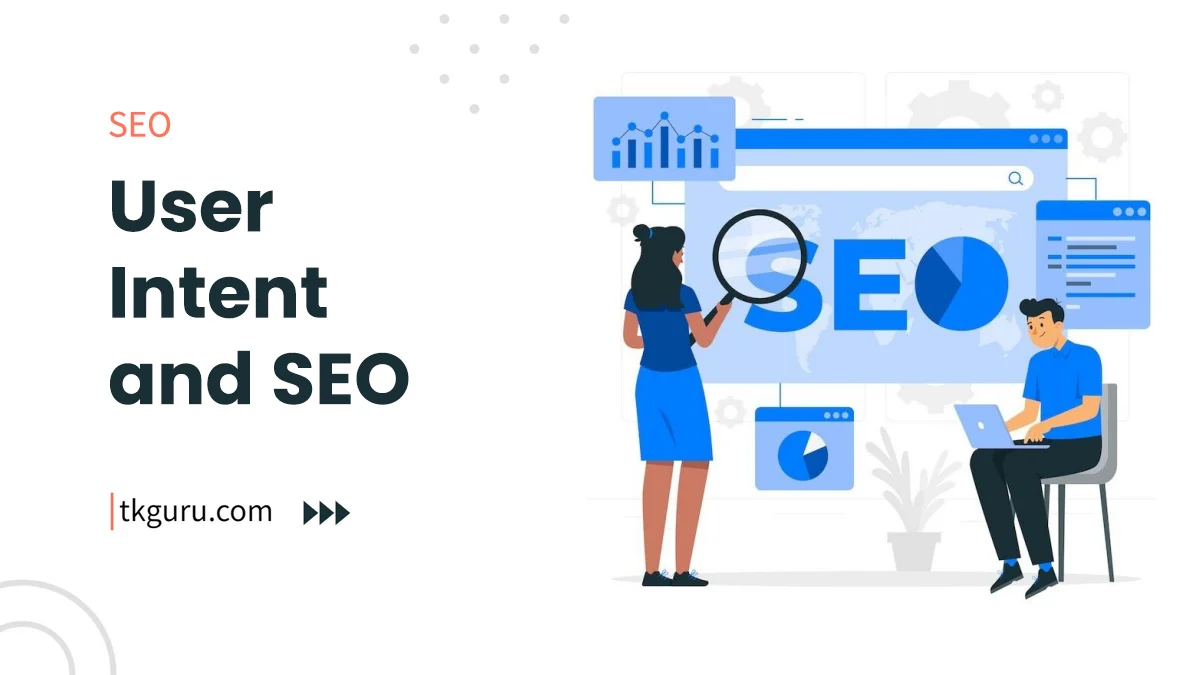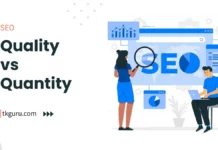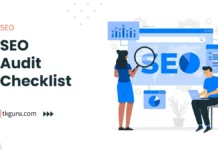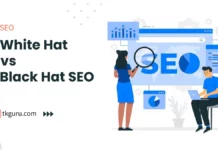Advertisements
Ratings

User Intent and SEO – In the dynamic realm of search engine optimization (SEO), the concept of user intent has risen to prominence as a pivotal element in crafting effective content strategies.
Understanding user intent, also known as search intent, involves deciphering the underlying motivation behind a user’s search query.
Aligning content with user intent not only facilitates higher search engine rankings but also enables the delivery of pertinent, valuable information to your target audience.
This comprehensive article delves into the intricacies of user intent, its paramount importance in SEO, and practical methodologies for harmonizing your content with diverse user intents.
I. Understanding User Intent
Contents
- 1. Defining User Intent
- 2. Significance of User Intent in SEO
- 3. Informational Intent
- 4. Navigational Intent
- 5. Transactional Intent
- 6. Keyword Research and Mapping
- 7. Crafting Relevant and Comprehensive Content
- 8. Reverse-Engineering Successful SERP Results
- 9. Local and Mobile User Intent
- 10. Metrics for User Engagement
- 11. Iterative Optimization
- Conclusion: The Power of User Intent Alignment
- Conclusion: Elevating Content Through User Intent Alignment
- User Intent and SEO FAQs
1. Defining User Intent
User intent signifies the specific objective that a user aims to fulfill while performing a search query. It transcends mere keyword usage and delves into the contextual purpose driving the search.
A profound comprehension of user intent empowers search engines to offer results that precisely cater to user requirements.
2. Significance of User Intent in SEO
User intent wields significant influence within search engine algorithms. Search engines aspire to furnish the most pertinent outcomes aligned with user intent, thereby enhancing user experience.
Websites that seamlessly integrate their content with user intent are poised to attain higher rankings and attract actively engaged visitors.
II. The Three Pillars of User Intent
3. Informational Intent
Definition: Informational intent encapsulates users seeking insights, solutions, or answers to queries.
Content Approach:
- Crafting comprehensive guides elucidating intricate topics
- Producing informative explainer videos
- Visualizing data through infographics to simplify comprehension
Example Keywords:
- How to improve sleep quality
- Benefits of a plant-based diet
- Explaining climate change causes
Definition: Navigational intent pertains to users searching for a specific website or digital resource.
Content Approach:
- Focusing on brand-specific content
- Optimizing homepage to facilitate easy navigation
- Creating user-friendly guides for website traversal
Example Keywords:
- Facebook login page
- Accessing YouTube
- Amazon Prime membership portal
5. Transactional Intent
Definition: Transactional intent signifies users being primed to execute a distinct action, such as making a purchase or subscribing to a service.
Content Approach:
- Designing product pages replete with conspicuous calls-to-action
- Offering comprehensive pricing comparisons and unbiased reviews
- Crafting persuasive sign-up and checkout pages
Example Keywords:
- Buy iPhone 12 online
- Comparing best web hosting services
- Signing up for Netflix subscription
III. Aligning Content with Search Intent
6. Keyword Research and Mapping
Process:
- Uncover core keywords pertinent to your content.
- Categorize keywords based on distinct user intents (informational, navigational, transactional).
- Generate content tailored to match the user intent within each category.
Example: Imagine managing a fitness blog. For “effective weight loss strategies” (informational intent), curate comprehensive guides.
For “best fitness tracker for running” (transactional intent), create a detailed comparison of different products catering to running enthusiasts.
7. Crafting Relevant and Comprehensive Content
Guidelines:
- Prioritize value and relevance over excessive keyword usage.
- Employ natural language and diversify keyword variants.
- Address prevalent queries aligned with the user intent.
Example: While catering to informational intent, devise content that meticulously answers users’ queries. For transactional intent, spotlight the merits of your products or services while proffering unambiguous calls-to-action.
IV. Analyzing SERPs for Insights
8. Reverse-Engineering Successful SERP Results
Process:
- Initiate searches for targeted keywords related to your content.
- Analyze the highest-ranking pages and scrutinize their content.
- Extract insights elucidating how successful pages seamlessly resonate with user intent.
Example: For instance, if your focus keyword is “top affordable laptops,” dissect the leading results to ascertain how they adroitly accommodate user intent. Identify recurrent patterns, content frameworks, and types of information presented.
9. Local and Mobile User Intent
Local Intent:
- Tailor content for local search queries by incorporating location-specific keywords.
- Harness Google My Business for local business establishments.
- Forge location-specific landing pages.
Mobile Intent:
- Optimize content for swift loading and mobile compatibility.
- Address mobile-centric queries like “nearby restaurants.”
- Foster a responsive design to ensure a seamless mobile experience.
V. Measuring and Adapting to User Engagement
10. Metrics for User Engagement
Metrics:
- Bounce rate: The proportion of users exiting a page without interaction.
- Time on page: The duration users spend engaging with your content.
- Click-through rate (CTR): The percentage of users clicking on your link in search results.
Significance: User engagement metrics offer insights into whether your content effectively caters to user intent and imparts substantial value.
11. Iterative Optimization
Process:
- Regularly assess engagement metrics through tools such as Google Analytics.
- Identify pages featuring diminished engagement and elevated bounce rates.
- Refine content to better align with user intent and enhance user involvement.
Example: If a product page showcases an elevated bounce rate, contemplate revising the content to encompass comprehensive details, benefits, and lucid calls-to-action.
VI. Case Studies: Successful User Intent Alignment
Case Study 1: E-Commerce Website Conversion Uplift
Challenge: An e-commerce platform experienced a significant influx of organic traffic but struggled to convert those visitors into actual sales.
Strategy: The platform initiated a meticulous analysis of user intent behind transactional keywords. This involved identifying keywords indicating high purchase intent, such as “buy,” “purchase,” and specific product names.
The platform then revamped its product pages to offer a seamless user experience, incorporating persuasive copy, clear calls-to-action, and detailed product specifications.
Additionally, it addressed frequently asked questions to alleviate any uncertainties users might have had before making a purchase.
Implementation: The product pages underwent comprehensive optimization, with a particular emphasis on aligning the content with the transactional intent.
The pages were restructured to accommodate users’ desire for concise yet pertinent information, supplemented by high-quality images and testimonials.
Results: Within a short span of three months, the e-commerce platform witnessed a remarkable 15% surge in conversion rates.
The optimized product pages effectively guided users through the decision-making process, enhancing their confidence and ultimately boosting conversions.
This case demonstrated that catering to user intent not only elevates search engine rankings but also significantly impacts the bottom line.
Case Study 2: Niche Blog Traffic Surge
Challenge: A niche blog dedicated to providing insightful content within a specific domain sought to amplify its targeted traffic.
Strategy: The blog recognized the potential of addressing informational intent queries within its niche.
By identifying keywords that users were likely to search when seeking in-depth information, the blog curated comprehensive guides that went beyond superficial insights.
These guides encompassed detailed explanations, practical tips, and case studies to offer users unparalleled value.
Implementation: The blog published a series of detailed guides, each catering to a specific informational intent.
The content was meticulously structured, employing a balance between text, images, and visuals to enhance readability.
Additionally, the guides integrated internal links to other relevant posts, thereby extending user engagement.
Results: Over a span of six months, the blog experienced an impressive 50% augmentation in organic traffic.
The meticulously curated guides not only attracted users seeking in-depth insights but also positioned the blog as an authoritative source within the niche.
This case underscored the potency of aligning content with informational intent, leading to tangible increases in both traffic and credibility.
Case Study 3: Escalating Local Business Visibility
Challenge: A local restaurant aimed to bolster its online presence to attract more patrons through local search queries.
Strategy: Recognizing the significance of local intent, the restaurant embarked on a two-pronged approach.
Firstly, it conducted thorough research to identify location-specific keywords relevant to its cuisine and offerings.
Secondly, it optimized its Google My Business listing, ensuring that all vital information was up to date, including business hours, contact details, and customer reviews.
Implementation: The restaurant integrated location-specific keywords organically within its website content, ensuring a seamless user experience.
It also utilized Google My Business to its fullest potential, regularly updating posts and images to keep the listing fresh and engaging.
Results: The restaurant’s website ascended to prominence in top-tier results for local searches, registering a notable 20% surge in online reservations.
This case illuminated the potency of aligning content with local intent and harnessing Google My Business as a strategic tool.
The restaurant successfully connected with users seeking dining options in the vicinity, driving tangible business growth.
Conclusion: The Power of User Intent Alignment
These case studies underscore the transformative impact of aligning content with user intent.
Whether it’s optimizing product pages for conversion, curating in-depth guides for niche audiences, or catering to local search queries, aligning content with user intent yields palpable outcomes.
As these cases vividly illustrate, understanding and catering to user intent isn’t merely a theoretical concept—it’s a strategic imperative that drives higher engagement, conversions, and ultimately, business success.
Conclusion: Elevating Content Through User Intent Alignment
User intent constitutes the cornerstone of efficacious SEO and content optimization. By adroitly comprehending multifaceted user intents and aligning your content strategies correspondingly, you cultivate content that garners not only higher search engine rankings but also resonates with the exigencies of your audience.
Content artfully steered by user intent fosters heightened user engagement, amplified click-through rates, and escalated conversions, epitomizing an indispensable facet of modern SEO paradigms.
User Intent and SEO FAQs
What is user intent in the context of SEO?
User intent refers to the specific goal or purpose a user has when entering a search query into a search engine.
It encompasses the information, solution, or action the user is seeking through their search.
How does user intent impact SEO?
Understanding user intent is crucial for effective SEO. Search engines aim to deliver the most relevant results based on user intent.
Websites that align their content with user intent are more likely to rank higher in search results and attract engaged visitors.
What are the types of user intent?
User intent can be categorized into several types:
- Informational intent: Users seek information or answers to questions.
- Navigational intent: Users aim to reach a specific website or page.
- Transactional intent: Users intend to make a purchase or engage in a specific action.
- Commercial intent: Users are researching products or services with potential purchase intent.
How can I optimize my content for user intent?
To optimize for user intent:
- Analyze search queries related to your content and determine the underlying intent.
- Create content that fulfills the user's intent and provides value.
- Use relevant keywords and phrases that match user intent.
- Consider the user's journey and guide them toward their desired action.
Why is aligning content with user intent important for SEO success?
Aligning content with user intent leads to higher user engagement, reduced bounce rates, and improved conversions.
When search engines see that your content satisfies user intent, they are more likely to rank your pages higher, resulting in increased organic traffic and better SEO performance.
Understanding and catering to user intent is a fundamental aspect of successful SEO.
By delivering content that precisely meets the needs and expectations of users, you can create a more satisfying browsing experience, boost your website's visibility in search results, and ultimately achieve your business goals.
| Web Hosting | Website |
| WordPress | Google Adsense |
| SEO | Affiliate Marketing |
| Blogging | YouTube |
Recent Posts
- Top 6 SEO Companies in Ahmedabad 2024: Unlock Success with the Top SEO Companies in Ahmedabad
- Top 5 SEO Companies in Kanpur 2024: Discover the Top-Rated SEO Companies in Kanpur
- Quality vs Quantity: The Importance of High-Quality Backlinks
- E-A-T and SEO: Expertise, Authoritativeness, Trustworthiness
Related Tags
search intent examples, user intent examples, 4 types of search intent, what is search intent, search intent tool, navigational search intent examples, how to determine search intent, commercial search intent






